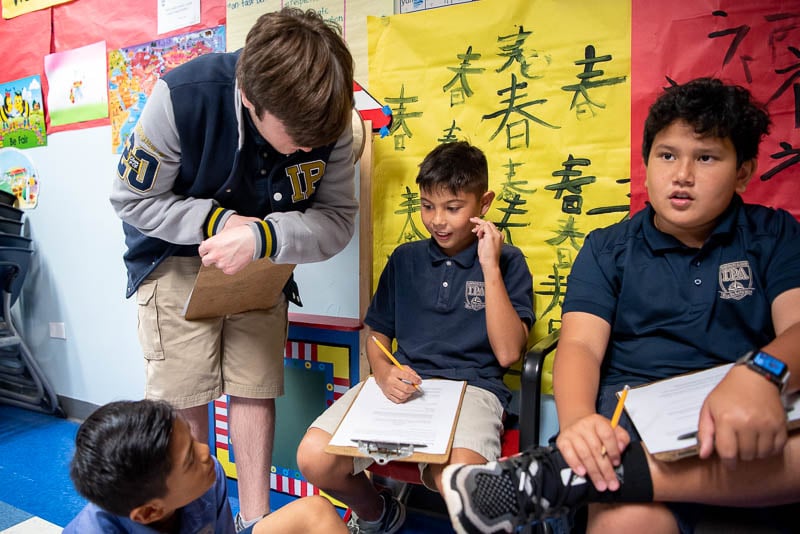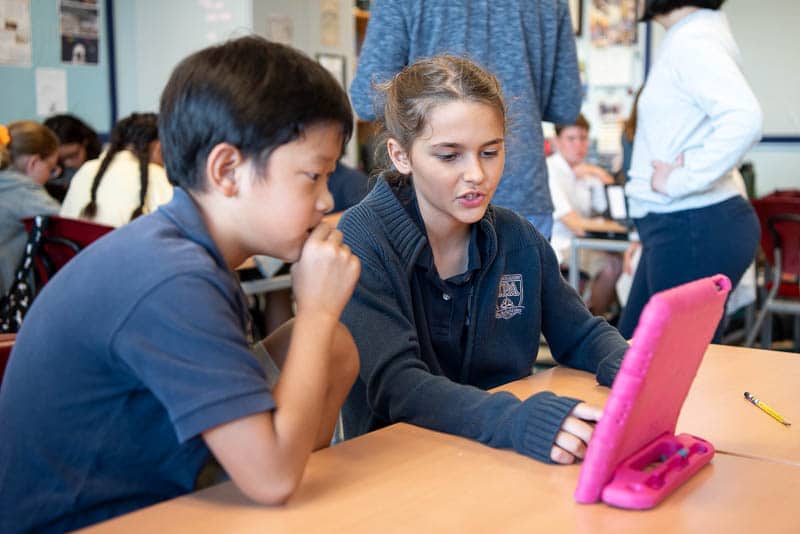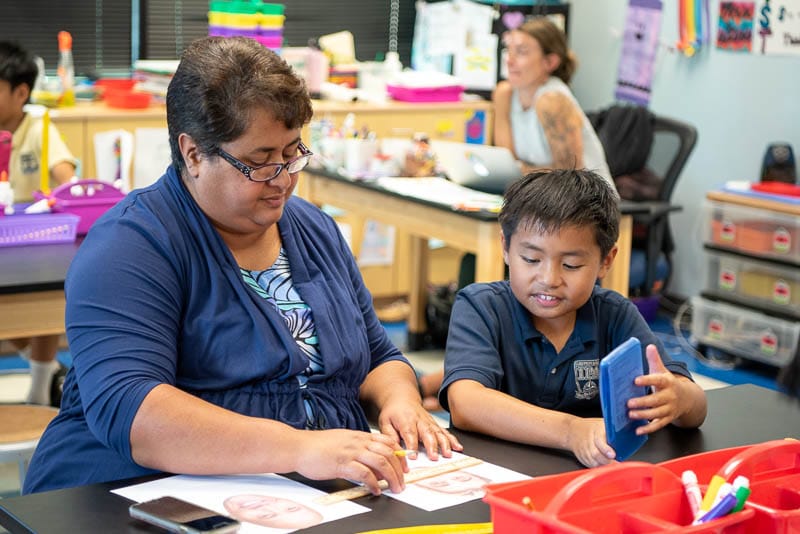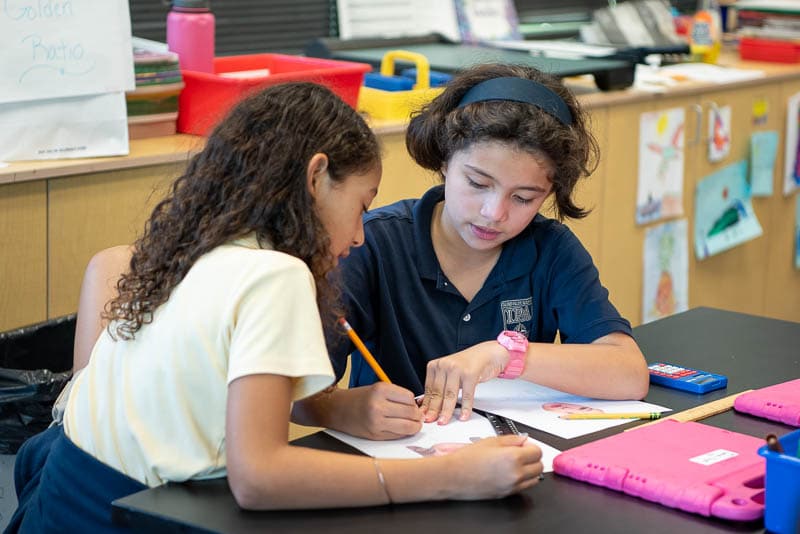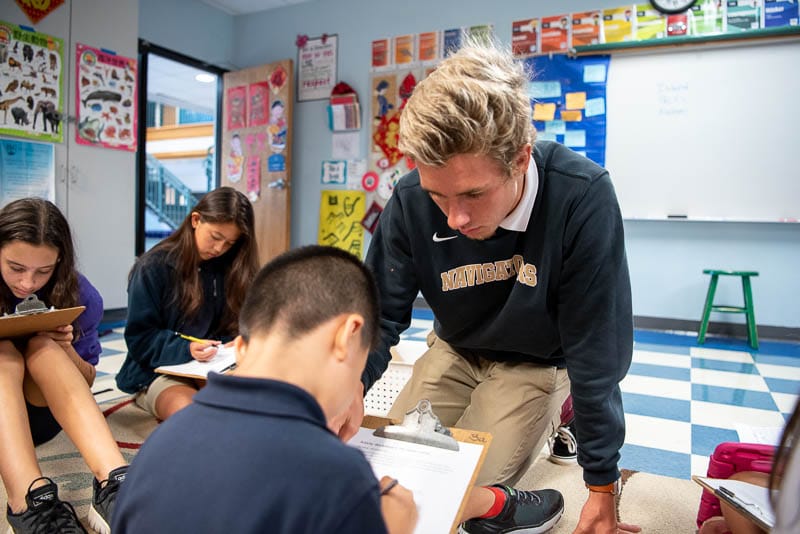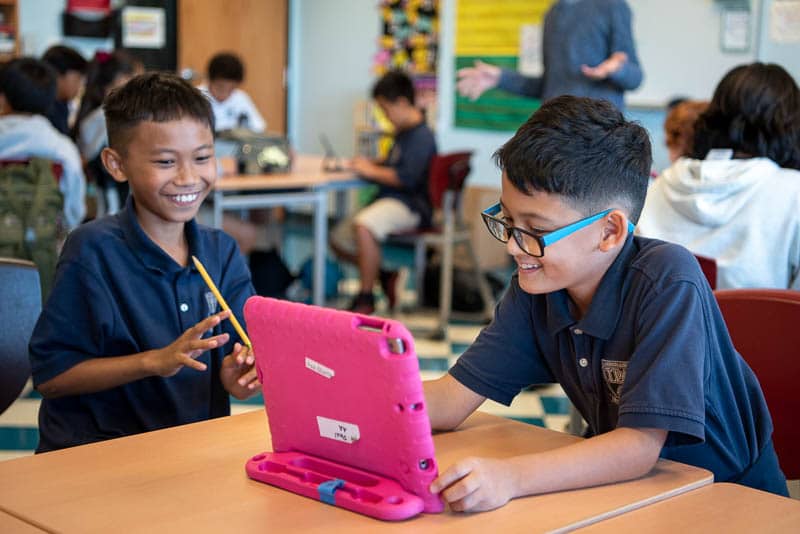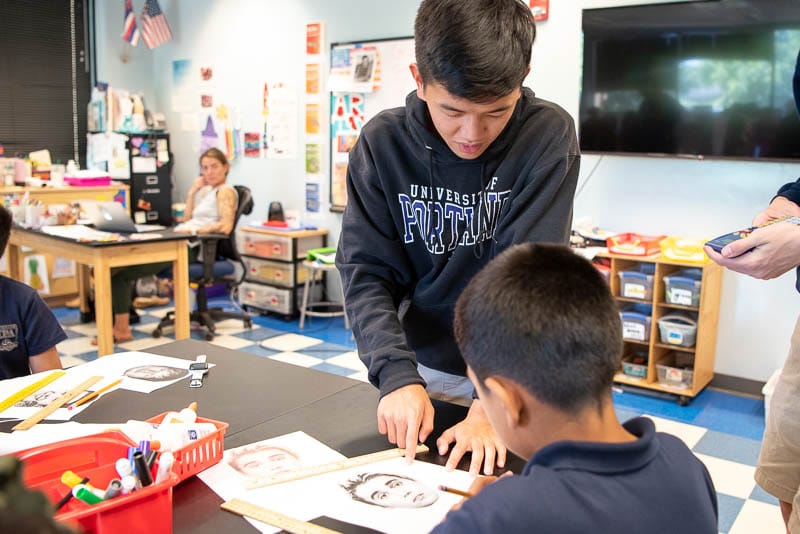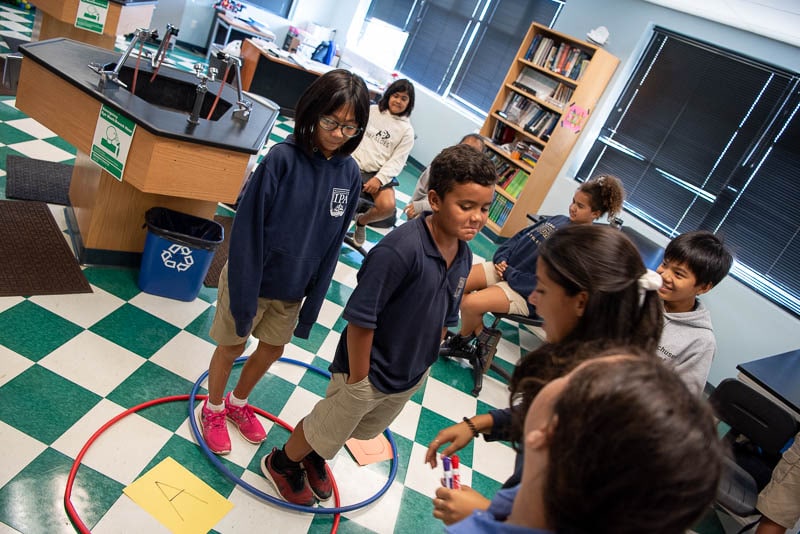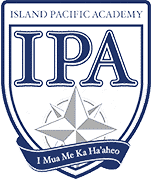Math is even more fun with friends! ISLAND PACIFIC ACADEMY’s elementary and middle school students spent this afternoon, Thursday October 10, participating in various problem-solving activities in the “Math Collaborative Activity” event. Groups of students from Grades 4-7 worked together solving fun and challenging math problems from different topics like Cryptology, Discovering Pi, Beauty and the Golden Ratio, and Real Life Set Problems. Students rotated with their groups to the different activities over the course of the two-hour event.
This annual event is organized by teachers from both divisions with the goal of easing the transition for students between Elementary and Secondary. “We wanted to build a relationship between Secondary and Elementary to make sure there was a flow in the math curriculum in terms of the scope and sequence,” explains Jorge Ochoa, Secondary math teacher and one of the organizers. “We thought the best way to do that was to start working together, and we realized that creating a math collaborative activity between these four grade levels would be a great way to do that.”
The event also involves students from the Upper school, with juniors and seniors from Mu Alpha Theta, the math honor society, teaching and leading the younger students in the activities. Ryan Fitzgerald ’21 and Kate Wilhelm ’20 led the Transformations session for the afternoon. “The last session we did was called Transformation Golf, where we taught the students how to do transformations and they got to use them to play golf on their iPads. And they seemed to have a lot of fun with it,” shares Fitzgerald.
“I want these kids to learn that math can be fun,” explains Wilhelm. “Sometimes we get caught up thinking math is so boring, or hard or difficult, but it doesn’t have to be and if you have the right teacher and tools it can be super fun.”
Getting students excited about math was definitely one of the goals of the event. “We designed the activities the way we did because we wanted the students to be excited about math and to know that math is part of the world they live in,” said Ochoa. “These activities are different ways for them to see math in action.”
Senior David Pavlicek ’20 agrees. “The most exciting thing is that some of the students are really excited to be doing these activities, which is good to see that there is an enthusiasm for learning about math.”
One of the activities, Real Life Set Problems, dealt with Venn diagrams and was illustrative of math in the real world. Students learned what the terms union and intersection and complement mean by using hula hoops to group students into sets, for example students with brothers, students with sisters, students with both, or students with neither.
“Basically what the activity demonstrated is that there are ways people are similar and there are ways they are different,” Ochoa explained. “And that’s how we build relationships with people – we make connections with others by learning what we have in common and how we’re different. That’s basically a Venn diagram.”
The students will get together for another afternoon of collaborative math activities in the Spring when they celebrate Pi Day.
